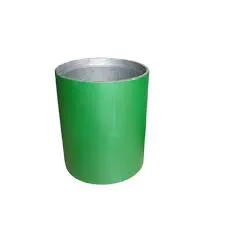- Afrikaans
- Albanian
- Amharic
- Arabic
- Armenian
- Azerbaijani
- Basque
- Belarusian
- Bengali
- Bosnian
- Bulgarian
- Catalan
- Cebuano
- Corsican
- Croatian
- Czech
- Danish
- Dutch
- English
- Esperanto
- Estonian
- Finnish
- French
- Frisian
- Galician
- Georgian
- German
- Greek
- Gujarati
- Haitian Creole
- hausa
- hawaiian
- Hebrew
- Hindi
- Miao
- Hungarian
- Icelandic
- igbo
- Indonesian
- irish
- Italian
- Japanese
- Javanese
- Kannada
- kazakh
- Khmer
- Rwandese
- Korean
- Kurdish
- Kyrgyz
- Lao
- Latin
- Latvian
- Lithuanian
- Luxembourgish
- Macedonian
- Malgashi
- Malay
- Malayalam
- Maltese
- Maori
- Marathi
- Mongolian
- Myanmar
- Nepali
- Norwegian
- Norwegian
- Occitan
- Pashto
- Persian
- Polish
- Portuguese
- Punjabi
- Romanian
- Russian
- Samoan
- Scottish Gaelic
- Serbian
- Sesotho
- Shona
- Sindhi
- Sinhala
- Slovak
- Slovenian
- Somali
- Spanish
- Sundanese
- Swahili
- Swedish
- Tagalog
- Tajik
- Tamil
- Tatar
- Telugu
- Thai
- Turkish
- Turkmen
- Ukrainian
- Urdu
- Uighur
- Uzbek
- Vietnamese
- Welsh
- Bantu
- Yiddish
- Yoruba
- Zulu
Understanding the Function and Importance of Pup Joints in Pipe Systems
What is a Pup Joint?
In the world of drilling and oil extraction, various tools and equipment play a crucial role in ensuring the process runs smoothly and efficiently. Among these essential components is the pup joint. This term refers to a short piece of pipe that is often used in conjunction with other piping components in drilling operations. Understanding what a pup joint is, its purpose, and its application is crucial for anyone involved in or studying the oil and gas industry.
Definition and Construction
A pup joint is a section of pipe that is typically shorter than standard lengths used in drilling rigs, often measuring anywhere from a few feet to a couple of meters long. These joints come in various diameters to match the main drilling pipe and are constructed from materials like carbon steel or alloy steel, designed to withstand high pressures and harsh environments often encountered in drilling operations.
Pup joints are available in various specifications, including threaded connections, which allow for easy and secure attachment to other sections of piping or equipment. The versatility in size and connection types makes pup joints an invaluable tool in the customization of drilling operations.
Purpose of a Pup Joint
The primary purpose of a pup joint is to maintain the integrity of the drilling assembly by providing flexibility in the design and setup of the piping system. Here are several key functions they serve
1. Accommodating Depth Changes Drilling operations often require adjustments in equipment length due to varying geological formations or changes in drilling depth. Pup joints allow engineers to make quick adjustments without the need to replace entire sections of the drill pipe.
what is a pup joint

2. Facilitating Equipment Connections Drilling assemblies consist of various components, including drill bits, drill collars, and other specialized equipment. A pup joint provides an easy solution to connect these components, ensuring a secure and efficient assembly.
3. Pressure Management The oil and gas extraction process involves significant pressures that can lead to equipment failure. Pup joints are designed to withstand these pressures, providing critical support and preventing leaks or breaks in the drilling assembly.
4. Modular Design The modular nature of pup joints enhances the efficiency of drilling operations. By allowing engineers to modify the system according to specific project requirements, pup joints contribute to overall operational flexibility.
Common Applications
Pup joints are commonly utilized in various sectors of the oil and gas industry, including exploration, drilling, and production. They are particularly useful in operations that require precision and adaptability, such as directional drilling, where slight adjustments in the drilling angle may necessitate the use of additional joints.
Additionally, pup joints can be employed in well completion and intervention operations, where customizing the length and configuration of tubing is essential for successful outcomes. Their ability to be easily deployed and removed makes them a favorite among drill operators who require both efficiency and reliability in their drilling rigs.
Conclusion
In summary, a pup joint may be a small component within the larger drilling assembly, but its significance should not be underestimated. This short section of pipe is essential for providing flexibility, accommodating equipment connections, managing pressure, and enhancing the modular design of drilling operations. As the oil and gas industry continues to evolve and push the boundaries of technology, the pup joint remains a fundamental element in achieving efficiency, safety, and success in drilling operations. Understanding and effectively utilizing pup joints can ultimately lead to improved performance and outcomes in the challenging field of oil and gas extraction.
-
Well Casing Extension Couplings – Applications and InstallationNewsJun.06,2025
-
Types of Crossover Subs in Drilling & CompletionNewsJun.06,2025
-
Key Features of High-Quality Tubing Pup JointsNewsJun.06,2025
-
Installation and Maintenance Tips for Steel Couplings for PipeNewsJun.06,2025
-
How to Select the Right Pup Joint for Oil & Gas OperationsNewsJun.06,2025
-
Applications of Stainless Steel Pipe CouplingsNewsJun.06,2025







